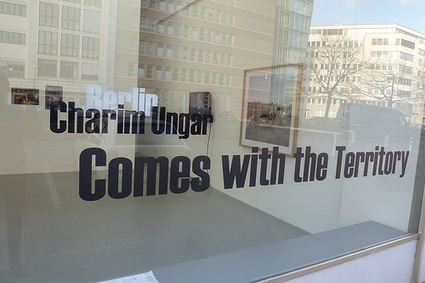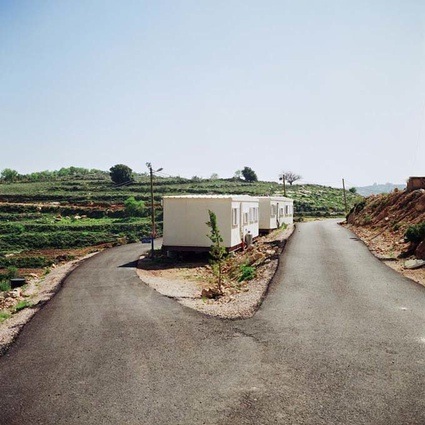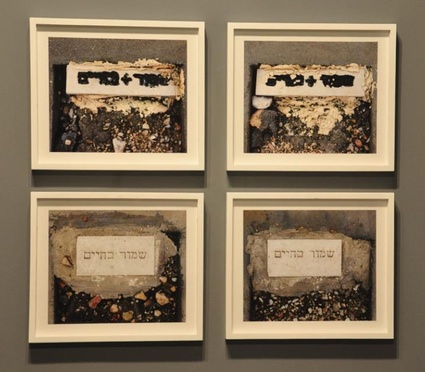
Another exhibition i just saw in Berlin is Comes with the Territory at Charim Ungar Contemporary (CUC). Don’t run to the gallery just yet, the show closed on Saturday.
The exhibition brought together Israeli artists who explore the daily struggle to define and stretch the boundaries of the territory. Obviously, the word ‘territory’ in Israel comes with tense references to occupied stretches of land such as the ones in the West Bank and the Gaza strip. The term also evokes Israeli settlements on Palestinian land, check points, separation walls, disputed borders, forced evictions, etc. The artists in the exhibition, however, approach territory in a more private context. Comes with the Territory featured the works of Rotem Balva, Raafat Hattab, Gaston Zvi Ickowicz, Joshua Neustein, Nira Pereg and Roi Vaspi-Yanai. Subjective selection of works:
 Gaston Zvi Ickowicz, From the series Settlements, 2004
Gaston Zvi Ickowicz, From the series Settlements, 2004
The work i noticed as soon as i entered the CUC gallery was one of the photos from the Settlements series that Gaston Zvi Ickowicz“>Gaston Zvi Ickowicz shot in the West Bank and the Gaza strip between 2003 and 2006. His photographs centre on the architecture of the settlements, portraits of the settlers, fences and road-blocks, and examine their relationship with the landscape. Ickowicz’s photographs reveal the character of the buildings, whose future as ruins is marked upon them from the moment of their construction.
 Joshua Neustein, Territorial Imperative, 1977
Joshua Neustein, Territorial Imperative, 1977
Joshua Neustein was among the first Israeli artists to question issues of territorial displacement and militarism in his performances, sound pieces and installation. In 1976, Neustein began his Territorial Imperative actions in areas at the heart of boundary dispute. He first visited the Golan Heights (that Israel annexed from Syria and that remains the bone of contention between the two people) in 1976; then he went to Belfast, Northern Ireland in 1977; Kassel, East/West border of Germany in 1977; and Krusa, German/Danish border in 1978. He was accompanied by a male dog that urinated on the land at each site. Neustein created a series of posters with a photo of the animal urinating and the words “Territorial Imperative” stamped across it. The artist then created a map of the area which showed the territory marked by the dog next to the political territory marked by nations.
 Nira Pereg, From the series Kept Alive, 2010
Nira Pereg, From the series Kept Alive, 2010
Nira Pereg’s Kept Alive (literal translation from hebrew) refers to texts engraved upon headstones to reserve pre-purchased burial spots.
The photos document burial rituals in Jerusalem’s Har HaMenuchot. Because of its ‘prime’ location in the holy city, the cemetery has become a very lucrative burial ground and its graves are spilling over. Pereg’s photos record empty burial plots saved in advanced for those who are still alive yet wish to occupy a spot there when time has come. Pereg was particularly interested in pairs of graves for spouses wishing to reserve adjacent burial spots. The signs on the grave say “Kept, Alive” or “Reserved while still living.” The ‘booked’ grave has not only become a status symbol, like a much coveted real estate but it also works as a superstitious ‘insurance’ of a longer life.
